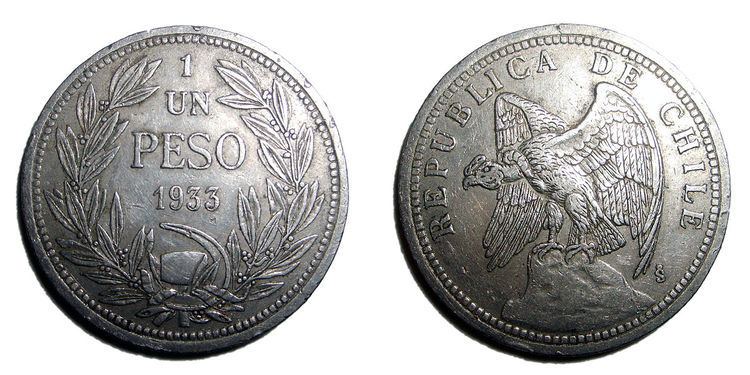 | ||
The Chilean land reform (Spanish: Reforma agraria chilena) was a process of land ownership restructuring that occurred from 1962 to 1973 in different phases. For much of the 20th century agriculture was one of the most backward sectors of Chilean economy. The land reform was initially supported by Chilean right, centre and left political parties plus the Catholic Church and the United States. After the 1973 Chilean coup d'état the ruling right-wing dictatorship initiated a counter-reform that reverted part of it and directed Chilean agriculture into a "neoliberal" model.
Contents
Pre-reform developments
Chilean intellectuals like Camilo Vial (1804-1882) had placed no particular emphasis on agriculture for the development of Chile while others like Francisco Encina (1874-1965) considered Chilean agriculture irrelevant for economic and social development. Francisco Encina considered that Chile was ready for industrialization.
Conditions in for early 20th century rural workers was harsh with Tancredo Pinochet denouncing the poor conditions of workers in the hacienda of president Juan Luis Sanfuentes during his presidency (1915-1920). Within a dual sector economic model the 20th century Chilean hacienda has been characterized as a prime example of a primitive and rural component. McBride, a Briton who visited Chile in the 1930s, is reported to have been "astounded" to see haciendas with "agricultural methods that reminds of ancient Egypt, Greece or Palestine."
Demands for a land reform appeared in Chile in the early 20th century and while neglected by the Radical governments (1938–1952) that favoured urban industrialization, in the early 1960s land reform ideas in Chile received support from both the Catholic Church and, through the Alliance for Progress, from the United States. Among Chilean politicians Eduardo Frei Montalva expressed his view in 1958 that both minifundia and latifundia were detrimental for Chilean agriculture.
The agrarian production in Chile contracted from 1950 onwards. A government plan set up in 1954 to address this ended with meager results and in 1958 a new plan was presented. That plan allowed CORFO to develop investments in dairy plants, refrigerated slaughterhouses, sugar refineries and transport infrastructure.
Alessandri and Frei administrations
In 1962, during the government of Jorge Alessandri, the first land reform law was promulgated. This law allowed for the distribution of state-owned land among campesinos. The next land reform law was passed in 1967 under the Christian Democrat government of Eduardo Frei Montalva, giving legal status to farmers syndicates. A total of 100 thousand campesinos became syndicalized in 400 syndicates. This law served also to expropriate 1400 land holdings totaling 3.5 million ha. In the case of the Catholic Church, it began in the 1960s to distribute its lands among campesinos.
Besides state reforms in the 1960s, Chilean communists and socialists engaged in the formation of agriculture syndicates through La Frontera and semi-arid Norte Chico. The Christian Democrats did the same around Valparaíso and Aconcagua Valley and in the Central Valley locations of Curicó, Linares and Talca.
Unidad Popular years
The Popular Unity government led by Salvador Allende that came to power in 1970 continued the land reform and, using the legal tools it inherited, attempted to expropriate all Chilean latifundia (usually known as fundos or estancias). Around 59% of Chile's agricultural lands were redistributed during the Chilean land reform. The hacienda and inquilinaje institutions that characterized large parts of Chilean agriculture were eliminated by land reform.
Economist and Pinochet collaborator José Piñera claims that a "socialist paradigm" was behind the land reform. He adds that the reform evolved into a general attack against property rights and traces the origins of the Chilean nationalization of copper during the Allende years to the Chilean land reform.
Post-coup counter-reform
Following the 1973 coup that ousted Allende and brought Pinochet to power individuals and organizations that had benefited from the land reform were oppressed, notably in the first years of dictatorship. In 1974 the military dictatorship begun an agrarian counter-reform. Of the lands expropriated during the land reform about 30% were returned to its former owners during the military dictatorship era, an additional 5% was auctioned. Reformed lands owned by cooperatives were divided into individual properties. The 16½ years of military dictatorship neoliberal economic policies bought a new generation of capitalists to the rural world.
Due to the lack of capital or credit to invest in their lands many campesinos sold their lands after the land reform was over. After the land reform there was a process of reconcentration of land ownership so that by 1997 the land ownership was more concentrated than it had been in 1955.
According to scholar Patricio Silva the "neo-liberal" agriculture model implemented by the Pinochet dictatorship was only possible thanks to the land reform.
